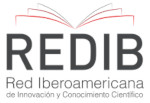Applications of design for the development of a food product
DOI:
https://doi.org/10.29147/datjournal.v10i1.879Keywords:
Design Food, Design Thinking, Symbiotics, ClimatericAbstract
Considering the lack of specific products that meet the nutritional needs of climacteric women and despite the growing market demand for customized health and wellness solutions, we propose to understand the profile of menopausal women, their complaints and nutritional needs by developing a multifunctional food for this specific demographic group. This study looks to applied design and innovation tools to create products, processes and services. To this end, the Design Thinking and Food Design methodologies were applied, adopting a qualitative, unsystematic and interdisciplinary approach, using knowledge from the neurosciences. The study culminated in the development of a food product to improve the quality of life of menopausal women, offering emotional comfort and functional ingredients that act on the enteric nervous system to reduce the symptoms that impair women’s performance in the job market and have a direct impact on the economy.
Downloads
References
BRASIL. Resolução - RDC Nº 27, de 6 de agosto de 2010. Dispõe sobre as categorias de alimentos e embalagens isentos e com obrigatoriedade de registro sanitário. Diário Oficial da União, Brasília, DF, 6 de ago. 2010. Disponível: https://bvsms.saude.gov.br/bvs/saudelegis/anvisa/2010/res0027_06_08_2010.html#:~:text=Disp%C3%B5e%20sobre%20as%20categorias%20de,com%20obrigatoriedade%20de%20registro%20sanit%C3%A1rio
BROWN, T. Design Thinking: uma metodologia poderosa para decretar o fim das velhas ideiais. 1 ed. Rio de Janeiro: AltaBooks, 2017.
BEAR, M. F.; CONNORS, B. W.; PARADISO, M. A. Neurociências: Desvendando o sistema nervoso. 2ª ed. Porto Alegre: Artmed, 2017.
CALEFFI, R.; CARVALHO, A. Achaz no Sítio da Banana Verde. [S.l.; S.n]. Viajante do Tempo, 2015
COSTA, H.; STOLTZ, T.; SILVA, T. F. B. X. da. A Utilização do Design Thinking pelo Designer Instrucional na Produção de Materiais Educacionais Destinados à Educação a Distância. EaD em Foco, [S. l.], v. 10, n. 2, 2020. Disponível em: https://eademfoco.cecierj.edu.br/index.php/Revista/article/view/953. DOI: https://doi.org/10.18264/eadf.v10i2.953
CRISCUOLO, I. O que é food design e quais são suas características? [S.l.; S.n]. Domestika. Disponível: https://www.domestika.org/pt/blog/8737-o-que-e-food-design-e-quais-sao-suas-caracteristicas. Acesso em: 03 jun. 2024.
ENGLER, R. C.; MOURÃO, N. M.; MARTINS, D. M. Sabores das Geraes: Uma abordagem do Food Design. Barbacena: EdUEMG, 2014.
FRANÇA, G. O Design Instrucional na Educação a Distância. São Paulo: Esfera, 2007.
GALLEN, C.; PANTIN-SOHIER, C.; OLIVEIRA, D. How can the design thinking process improve an innovative insect-based food experience?. International Journal of Food Design, [S. l.], v. 7, n. 1, 2020. DOI: https://doi.org/10.1386/ijfd_00035_1 DOI: https://doi.org/10.1386/ijfd_00035_1
LÊNNEN, R. Food Design: Repensar a Maneira de Pensar o Alimento. Verakis, 2021. Disponível em: https://www.verakis.com/fundacao/a-comida-na-tela/food-design-repensar-a-maneira-de-pensar-o-alimento. Acesso em: 03 jun. 2024.
LIMA, FO; ALONÇO, M.; RITTER, OMS. Análise de conteúdo como metodologia em periódicos Qualis-CAPES A1 em Educação em Ciências. Pesquisa, Sociedade e Desenvolvimento, [S. l.], v. 3, pág. e43110313378, 2021. DOI: 10.33448/rsd-v10i3.13378. Disponível em: https://rsdjournal.org/index.php/rsd/article/view/13378. DOI: https://doi.org/10.33448/rsd-v10i3.13378
MORE, J. C. R. S. et al. Kefir: características microbiológicas e métodos de fabricação. Revista Científica Multidisciplinar Núcleo do Conhecimento. Ano 06, ed. 06, v. 04, pp. 64-86. Junho de 2021., Disponível em: https://www.nucleodoconhecimento.com.br/saude/metodos-de-fabricacao Acesso em: 25 de jun de 2024.
NOGUEIRA, B.L. Probióticos para o tratamento de doenças neurológicas: uma revisão. 2015; 35.
PORTUGAL, C. Introdução à metodologia qualitativa: aspectos fundamentais [Aula]. Universidade Estadual de São Paulo “Júlio de Mesquita Filho”, 2024.
REDAÇÃO DW. 13ª Semana de Design de São Paulo. São Paulo, 2024.
SILVESTRE, Carina Maria Rôlo Ferreira. O diálogo entre o cérebro e o intestino – Qual o papel dos probióticos? Faculdade de Medicina da Universidade de Lisboa Trabalho Final de Mestrado Integrado em Medicina, Lisboa, 2015
SILVERTHORN, D. U. Fisiologia Humana: Uma Abordagem Integrada, 7 ed. Porto Alegre, RS: Artmed, 2017.
VARELLA, Dráuzio. Menopausa e Climatério. Ministério da Saúde, [S.l.; S.n], 2020. Disponivel em: https://bvsms.saude.gov.br/menopausa-e-climaterio/ Acesso em 08/06/2024.
SANTOS, C. M. DA C.; PIMENTA, C. A. DE M.; NOBRE, M. R. C.. The PICO strategy for the research question construction and evidence search. Revista Latino-Americana de Enfermagem, v. 15, n. 3, p. 508–511, jun. 2007. DOI: https://doi.org/10.1590/S0104-11692007000300023
VEDOVATO, Kleber; TREVIZAN, Aline Rosa; ZUCOLOTO, Caroline Nonis; BERNARDI, Murillo Dorileo Leite; ZANONI, Jacqueline Nelisis;
MARTINS, Juliana Vanessa Colombo Perles. O eixo intestino-cérebro e o papel da serotonina. Arquivos de Ciências da Saúde da UNIPAR, [S. l.], v. 18, n. 1, 2015. DOI: 10.25110/arqsaude.v18i1.2014.5156. Disponível em: https://www.revistas.unipar.br/index.php/saude/article/view/5156. Acesso em: 26 jun. 2024. DOI: https://doi.org/10.25110/arqsaude.v18i1.2014.5156
Downloads
Published
How to Cite
Issue
Section
License
Copyright (c) 2025 DAT Journal

This work is licensed under a Creative Commons Attribution 4.0 International License.


























